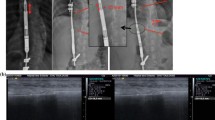Abstract
Introduction
MCGR lengthening has become an important innovation in treating patients with EOS. An alternative to traditional growing instrumentation, a single surgical procedure is necessary for insertion of the construct, followed by non-invasive lengthening in the outpatient setting. With every new technology emanates a new complication to troubleshoot. Failure to lengthen in the MCGR is a significant cause of revision surgery. Currently, no consensus exists on how to define a MCGR lengthening failure, what steps are necessary after a failure to lengthen, and what factors determine these next steps. The primary goal of this study was to establish a consensus on how to define and navigate a MCGR that fails to lengthen.
Methods
A series of 3 surveys were distributed to 49 early onset scoliosis surgeons with 37 responses between December 2021 and April 2022. Consensus was defined as at least 70% agreement.
Results
37 of 49 surgeons (75%) responded to the first survey, and all 37 surgeons responded to the following two surveys (100%). Consensus statements were reached on 25% of questions (3/12) from survey 1, 40% of questions (4/10) on survey 2, and 100% of questions (5/5) on survey 3. The questions that reached consensus are detailed in Table 1. Consensus steps to navigate a rod that fails to lengthen 1 mm (97%) in the office include retrying during the same visit (78%), changing technique in the office (88%), and not adjusting the interval between lengthening appointments (78%).
Conclusion
Best clinical practice guidelines using a Delphi method established a consensus on defining failure to lengthen in a MCGR (less than 1 mm), appropriate responses to failure to lengthen (re-attempt to lengthen and re-position patient) and a definition for a non-functional MCGR (failure to lengthen 3 consecutive times). This consensus will help standardize research on this important problem.
Level of evidence
V—expert opinion.


Similar content being viewed by others
Data availability
The data used for this study is available upon request.
References
Klyce W, Mitchell SL, Pawelek J et al (2020) Characterizing use of growth-friendly implants for early-onset scoliosis: a 10-year update. J Pediatr Orthop 40(8):e740–e746. https://doi.org/10.1097/BPO.0000000000001594
Rushton PRP, Smith SL, Forbes L, Bowey AJ, Gibson MJ, Joyce TJ (2019) Force testing of explanted magnetically controlled growing rods. Spine 44(4):233–239. https://doi.org/10.1097/BRS.0000000000002806
AlNouri M, Wada K, Kumagai G et al (2022) The incidence and prevalence of early-onset scoliosis: a regional multicenter epidemiological study. Spine J 22(9):1540–1550. https://doi.org/10.1016/j.spinee.2022.03.016
Teoh KH, Winson DMG, James SH et al (2016) Magnetic controlled growing rods for early-onset scoliosis: a 4-year follow-up. Spine J Off J North Am Spine Soc 16(4 Suppl):S34-39. https://doi.org/10.1016/j.spinee.2015.12.098
Rushton PRP, Smith SL, Kandemir G et al (2020) Spinal lengthening with magnetically controlled growing rods: data from the largest series of explanted devices. Spine 45(3):170–176. https://doi.org/10.1097/BRS.0000000000003215
Akbarnia BA, Cheung K, Noordeen H et al (2013) Next generation of growth-sparing techniques: preliminary clinical results of a magnetically controlled growing rod in 14 patients with early-onset scoliosis. Spine 38(8):665–670. https://doi.org/10.1097/BRS.0b013e3182773560
Oetgen ME, McNulty EM, Matthews AL (2019) Cost-effectiveness of magnetically controlled growing rods: who really benefits? Spine Deform 7(3):501–504. https://doi.org/10.1016/j.jspd.2018.09.066
Thakar C, Kieser DC, Mardare M, Haleem S, Fairbank J, Nnadi C (2018) Systematic review of the complications associated with magnetically controlled growing rods for the treatment of early onset scoliosis. Eur Spine J Off Publ Eur Spine Soc Eur Spinal Deform Soc Eur Sect Cerv Spine Res Soc 27(9):2062–2071. https://doi.org/10.1007/s00586-018-5590-4
Cheung JPY, Yiu KKL, Samartzis D, Kwan K, Tan BB, Cheung KMC (2018) Rod lengthening with the magnetically controlled growing rod: factors influencing rod slippage and reduced gains during distractions. Spine 43(7):E399–E405. https://doi.org/10.1097/BRS.0000000000002358
Akbarnia BA, Pawelek JB, Cheung KMC et al (2014) Traditional growing rods versus magnetically controlled growing rods for the surgical treatment of early-onset scoliosis: a case-matched 2-year study. Spine Deform 2(6):493–497. https://doi.org/10.1016/j.jspd.2014.09.050
Cheung KMC, Cheung JPY, Samartzis D et al (2012) Magnetically controlled growing rods for severe spinal curvature in young children: a prospective case series. The Lancet 379(9830):1967–1974. https://doi.org/10.1016/S0140-6736(12)60112-3
Bednar ED, Bergin B, Kishta W (2021) Comparison of magnetically controlled growing rods with other distraction-based surgical technologies for early-onset scoliosis: a systematic review and meta-analysis. JBJS Rev. 9(1):e20.00062. https://doi.org/10.2106/JBJS.RVW.20.00062
Joyce TJ, Smith SL, Rushton PRP, Bowey AJ, Gibson MJ (2018) Analysis of explanted magnetically controlled growing rods from seven UK spinal centers. Spine 43(1):E16–E22. https://doi.org/10.1097/BRS.0000000000002221
Joyce TJ, Smith SL, Kandemir G et al (2020) The NuVasive MAGEC rod urgent field safety notice concerning locking pin fracture: how does data from an independent explant center compare? Spine 45(13):872–876. https://doi.org/10.1097/BRS.0000000000003439
Kwan KYH, Alanay A, Yazici M et al (2017) Unplanned reoperations in magnetically controlled growing rod surgery for early onset scoliosis with a minimum of two-year follow-up. Spine 42(24):E1410–E1414. https://doi.org/10.1097/BRS.0000000000002297
Roye BD, Simhon ME, Matsumoto H et al (2020) Establishing consensus on the best practice guidelines for the use of bracing in adolescent idiopathic scoliosis. Spine Deform 8(4):597–604. https://doi.org/10.1007/s43390-020-00060-1
Roye BD, Campbell ML, Matsumoto H et al (2020) Establishing consensus on the best practice guidelines for use of halo gravity traction for pediatric spinal deformity. J Pediatr Orthop 40(1):e42–e48. https://doi.org/10.1097/BPO.0000000000001379
Cheung JPY, Zhang T, Bow C, Kwan K, Sze KY, Cheung KMC (2020) The crooked rod sign: a new radiological sign to detect deformed threads in the distraction mechanism of magnetically controlled growing rods and a mode of distraction failure. Spine 45(6):E346–E351. https://doi.org/10.1097/BRS.0000000000003268
Poon S, Spencer HT, Fayssoux RS, Sever R, Cho RH (2018) Maximal force generated by magnetically controlled growing rods decreases with rod lengthening. Spine Deform 6(6):787–790. https://doi.org/10.1016/j.jspd.2018.03.009
Funding
This research did not receive any funding.
Author information
Authors and Affiliations
Consortia
Corresponding author
Ethics declarations
Conflict of interest
The authors of this work have no disclosures or potential conflicts of interest related to this study.
Ethical approval
All procedures involving human participants were in accordance with the ethical standards of the Institutional Review Board and with the 1964 Helsinki declaration and its later amendments.
Informed consent
Informed consent was obtained from all participants.
Additional information
Publisher's Note
Springer Nature remains neutral with regard to jurisdictional claims in published maps and institutional affiliations.
Supplementary Information
Below is the link to the electronic supplementary material.
Rights and permissions
Springer Nature or its licensor (e.g. a society or other partner) holds exclusive rights to this article under a publishing agreement with the author(s) or other rightsholder(s); author self-archiving of the accepted manuscript version of this article is solely governed by the terms of such publishing agreement and applicable law.
About this article
Cite this article
Hauth, L., Roye, B.D., Poon, S. et al. Failure to lengthen consensus for the magnetically controlled growing rod (MCGR). Spine Deform 12, 305–311 (2024). https://doi.org/10.1007/s43390-023-00791-x
Received:
Accepted:
Published:
Issue Date:
DOI: https://doi.org/10.1007/s43390-023-00791-x




